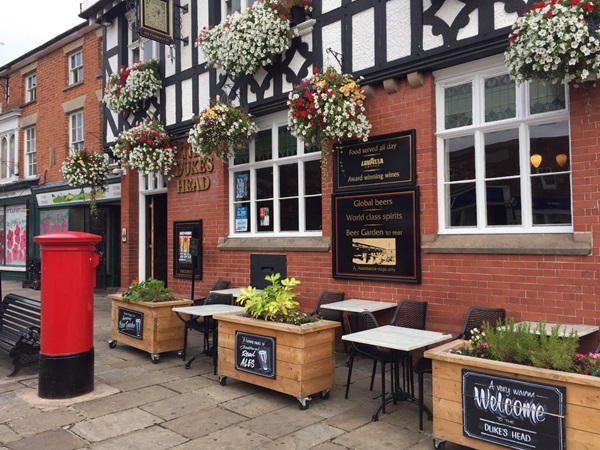Pub history
The Duke’s Head
This pub was once the town’s post office.
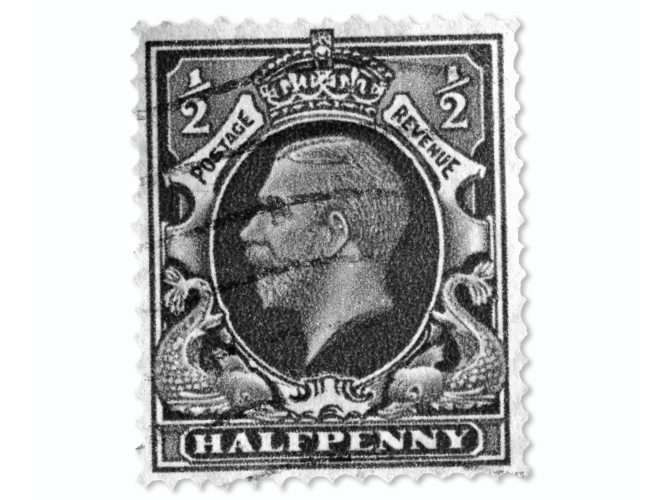
Before the post office was built in Corn Square, there was a small building on the front part of the L-shaped site. In the mid 1850s, it was the premises of dressmaker Ann Lloyd, later occupied by Susanah Knill. She was the widow of the innkeeper of the Duke’s Head Inn, located just a few feet away on the corner of Draper’s Lane. The long-standing timber-framed inn closed in the 1870s and was demolished soon after.
Photographs and text about The Duke’s Head
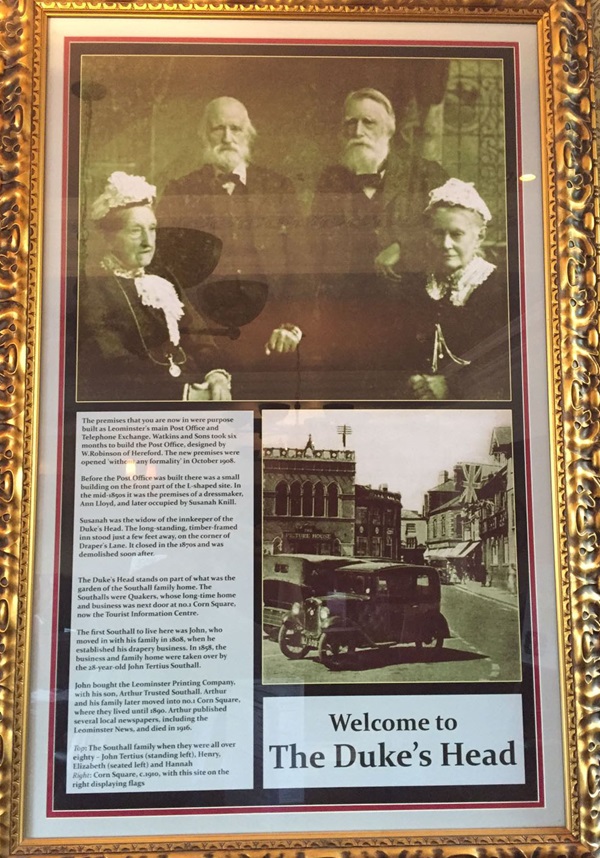
The text reads: The premises that you are now in were purpose built as Leominster’s main post office and telephone exchange. Watkins and Sons took six months to build the post office, designed by W Robinson of Hereford. The new premises were opened ‘without any formality’ in October 1908.
Before the post office was built, there was a small building on the front part of the L-shaped site. In the mid-1850s, it was the premises of a dressmaker, Ann Lloyd, and it was later occupied by Susanah Knill.
Susanah was the widow of the innkeeper of the Duke’s Head. The long-standing timber-framed inn stood just a few feet away, on the corner of Draper’s Lane. It closed in the 1870s and was demolished soon after.
The Duke’s Head stands on the part of what was the garden of the Southall family home. The Southalls were Quakers, whose long-time home and business was next door at No. 1 Corn Square, now the Tourist Information Centre.
The first Southall to live here was John, who moved in with his family in 1808, when he established his drapery business. In 1858, the business and family home were taken over by the 28-year-old John Tertius Southall.
John brought the Leominster Printing Company, with his son Arthur Trusted Southall. Arthur and his family later moved into No. 1 Corn Square, where they lived until 1890. Arthur published several local newspapers, including the Leominster News, and died in 1916.
Top: The Southall family when they were all over 80 – John Tertius (standing left), Henry, Elizabeth (seated left) and Hannah
Right: Corn Square, c1910, with this site on the right displaying flags
An illustration and text about John Scarlett Davis
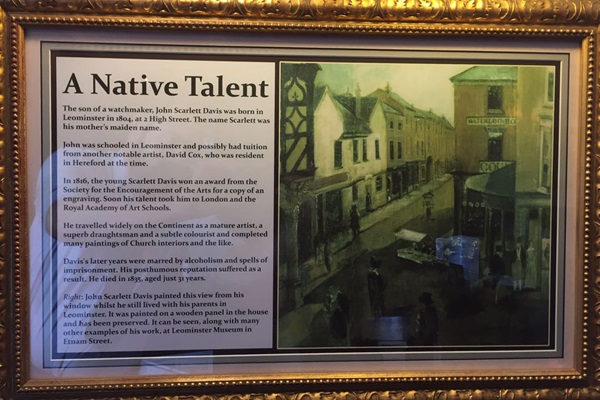
The text reads: The son of a watchmaker, John Scarlett Davis was born in Leominster in 1804, at 2 High Street. The name Scarlett was his mother’s maiden name.
John was schooled in Leominster and possibly had tuition from another notable artist, David Cox, who was resident in Hereford at the time.
In 1816, the young Scarlett Davis won an award from the Society for the Encouragement of the Arts for a copy of an engraving. Soon, his talent took him to London and the Royal Academy of Art Schools.
He travelled widely on the Continent as a mature artist, a superb draughtsman and a subtle colourist and completed many paintings of church interiors and the like.
Davis’s later years were marred by alcoholism and spells of imprisonment. His posthumous reputation suffered as a result. He died in 1835, aged just 31 years.
Right: John Scarlett Davis painted this view from his window whilst he still lived with his parents in Leominster. It was painted on a wooden panel in the house and has been preserved. It can be seen, along with many other examples of his work, at Leominster Museum in Etnam Street.
Photographs of sorting in the post office
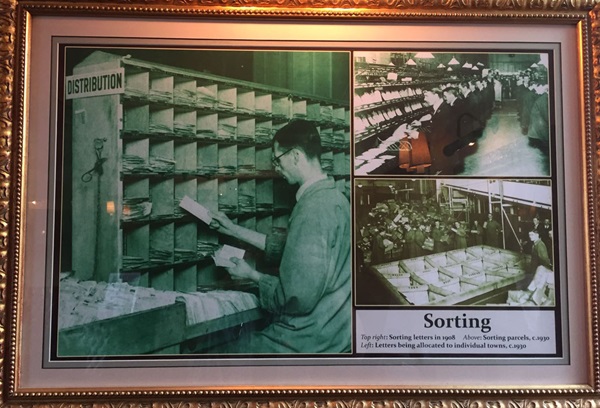
Top, right: Sorting letters in 1908
Above: Sorting parcels, c1930
Left: Letters being allocated to individual towns, c1930
Illustrations and text about crime and punishment
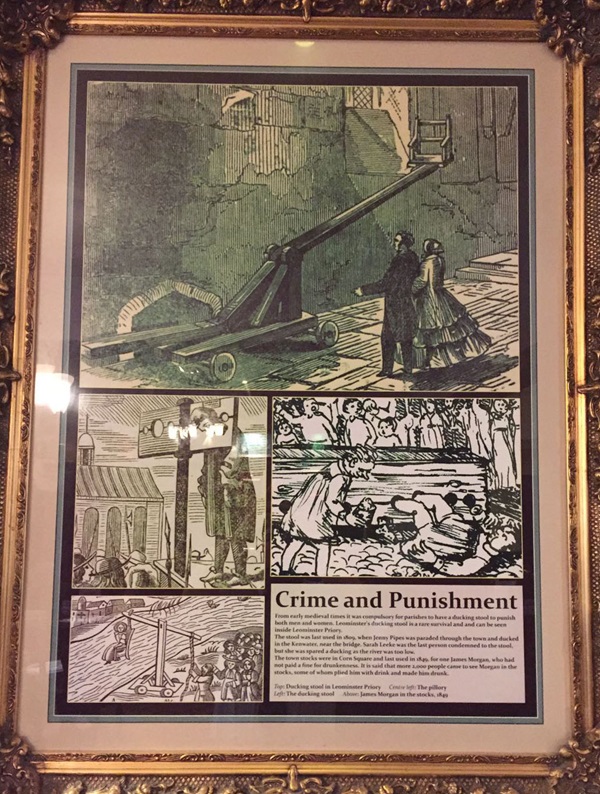
The text reads: From early medieval times, it was compulsory for parishes to have a ducking stool to punish both men and women. Leominster’s ducking stool is a rare survival and can be seen inside Leominster Priory.
The stool was last used in 1809, when Jenny Pipes was paraded through the town and ducked in the Kenwater, near the bridge. Sarah Leeke was the last person condemned to the stool, but she was spared a ducking as the river was too low.
The town stocks were in Corn Square and last used in 1849, for one James Morgan, who had not paid a fine for drunkenness. It is said that more than 2,000 came to see Morgan in the stocks, some of whom plied him with drink and made him drunk.
Top: Ducking stool in Leominster Priory
Centre, left: The pillory
Left: The ducking stool
Above: James Morgan in the stocks, 1849
Photographs of mail-delivery transport
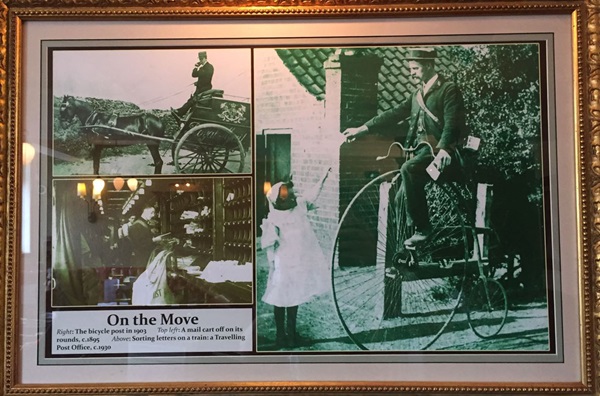
Right: The bicycle post in 1903
Top, left: A mail cart off on its rounds, c1895
Above: Sorting letters on a train: a travelling post office, c1930
An original stamp machine
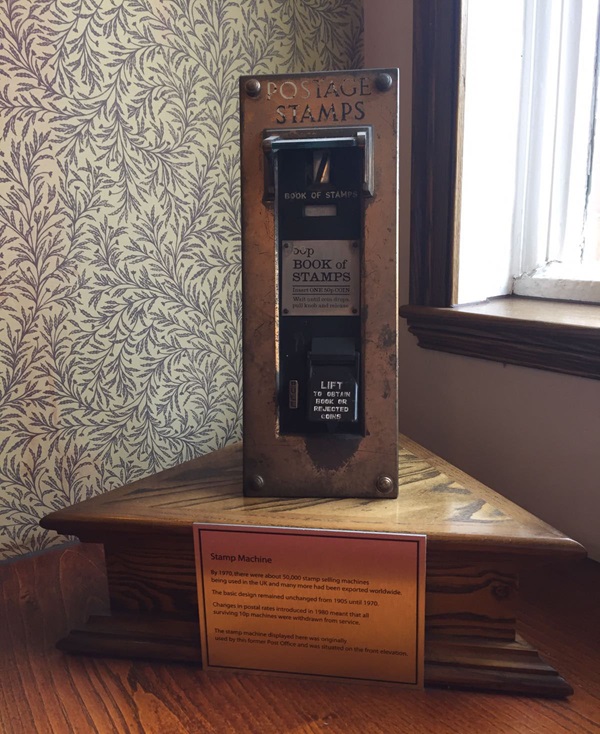
The text reads: By 1970, there were about 50,000 stamp machines being used in the UK, and many more had been exported worldwide.
The basic design remained unchanged from 1905 until 1970.
Changes in postal rates introduced in 1980 meant that all surviving 10p machines were withdrawn from service.
The stamp machine displayed here was originally used by this former post office and was situated on the front elevation.
External photograph of the building – main entrance
